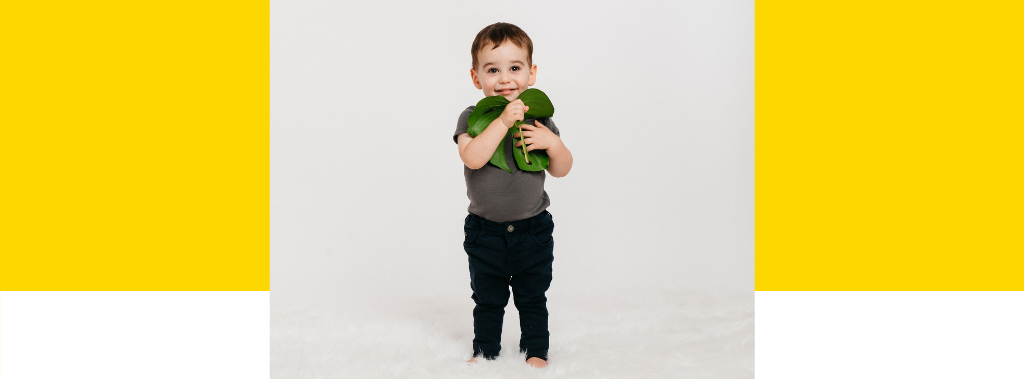Most of us know that we should be reducing our plastic, and are trying to find ways to do just that—skipping the straw, bringing our own coffee mugs. But when it’s the busiest season—back to school!—our ambitions to live greener can fly out the window in favor of convenience.
Making the family lifestyle change to reduce and reuse more is not something that can be achieved overnight. Trust me: I wish it could be easier! It’s something we’ve been working on for awhile (see our previous post The Reduce/Reuse/Recycle Problem). But baby steps matter, and over time we can shift our behavior to generate less waste. With school starting, now is the perfect time to start adapting new routines for you and your bubs.
Here, we share seven simple, achievable ways to reduce your plastic waste this school year.
1. Reduce single-use items and snacks.
One of the biggest contributors to our plastic waste predicament is single use products. According to the EPA, one to two thirds of the debris found on beaches comes from single use disposable plastic packaging from food and beverage related goods, like food wrappers and plastic straws.
Single use items bring ease and efficiency into our crazy lives, but cutting our usage of them is a lot easier than it seems. As you pack a lunch for your little ones, ditch the plastic straws and utensils. Use reusable stainless steel, silicone, or bamboo straws and cutlery. Also, instead of those plastic wrapped snack packs, reach for fresh fruits and vegetables that are full of vitamins and minerals.
2. Buy in bulk.
Another way to cut down on single use items is to buy items in bulk. At the grocery store, you can find foods like grains, pastas, granolas, nuts, dried fruit and spices in bulk bins. Buying these items in bulk allows you to purchase just as much as you need and no more, making it much friendlier on your wallet as well. Some groceries stores even allow you to bring your own refillable containers to fill up your bulk items! Check which stores sell bulk items and allow you to bring your own containers here.

3. Use reusable shopping bags and water bottles.
This may seem like a common tip, but it’s so important! A single plastic bag or bottle can take anywhere from 1,000 to 1,500 years to decompose. Opting for reusable shopping bags and water bottles helps to keep plastic from our landfills and oceans.
So while you’re going back to school shopping, bring your own grocery totes or reusable produce bags, and let your little one pick out a fun water bottle to use for school lunches.
4. Make less frequent trips to the frozen aisle.
Frozen meals are notorious for their plastic packaging. Even meals covered in cardboard always come coated with a plastic film on top. Ideally, we would recommend avoiding the frozen aisle, but that’s a lot easier said than done. Busy moms need help sometimes, and I'm no exception!
That being said, whenever you have a little bit more time on your hands, go for fresher produce. Little by little, you can reduce your plastic waste and encourage your kids to eat healthier.
5. Pack your kid’s lunch in eco-friendly packaging.
Ditch the plastic baggies and instead use bento boxes, which come in all colors and designs. Our favorite is the PlanetBox- thanks to its stainless steel, which is nontoxic and dishwasher friendly! They’re easy to clean and reuse the next day, which helps to reduce plastic waste. I also use If You Care compostable paper sandwich bags, which I mentioned in a prior blog post.

6. Seek out sustainable packaging for personal care products.
While a large portion of our plastic waste may come from single use food or beverage items, there’s a substantial amount of plastic waste that comes from the beauty and personal care industry as well. More than 552 million shampoo bottles end up in landfills annually. And looking just at the United States, the amount of shampoo bottles that are thrown out every year could fill up 1,164 football fields.
Seek out personal care brands that offer value-sized refills or non-plastic formats like bar soap. Our Bubbsi products are packaged in nontoxic refillable silicone bottles, and we offer value sizes to refill them when you run out!
7. Shop sustainable clothing.
Clothing is one of the more unexpected sources of plastic pollution. According to the International Cotton Advisory Committee, 60% of the clothes made worldwide are made from synthetic fibers like polyester, nylon, and acrylic—which are different forms of plastic. The EPA reports that Americans throw out 10.5 million tons of clothing every year.
Keep plastic and other waste out of the landfills by purchasing sustainably sourced or pure cotton clothing for your bub’s back-to-school wardrobe.
Here are some super adorable (and affordable!) eco-friendly kids clothing brands that I happen to love:

